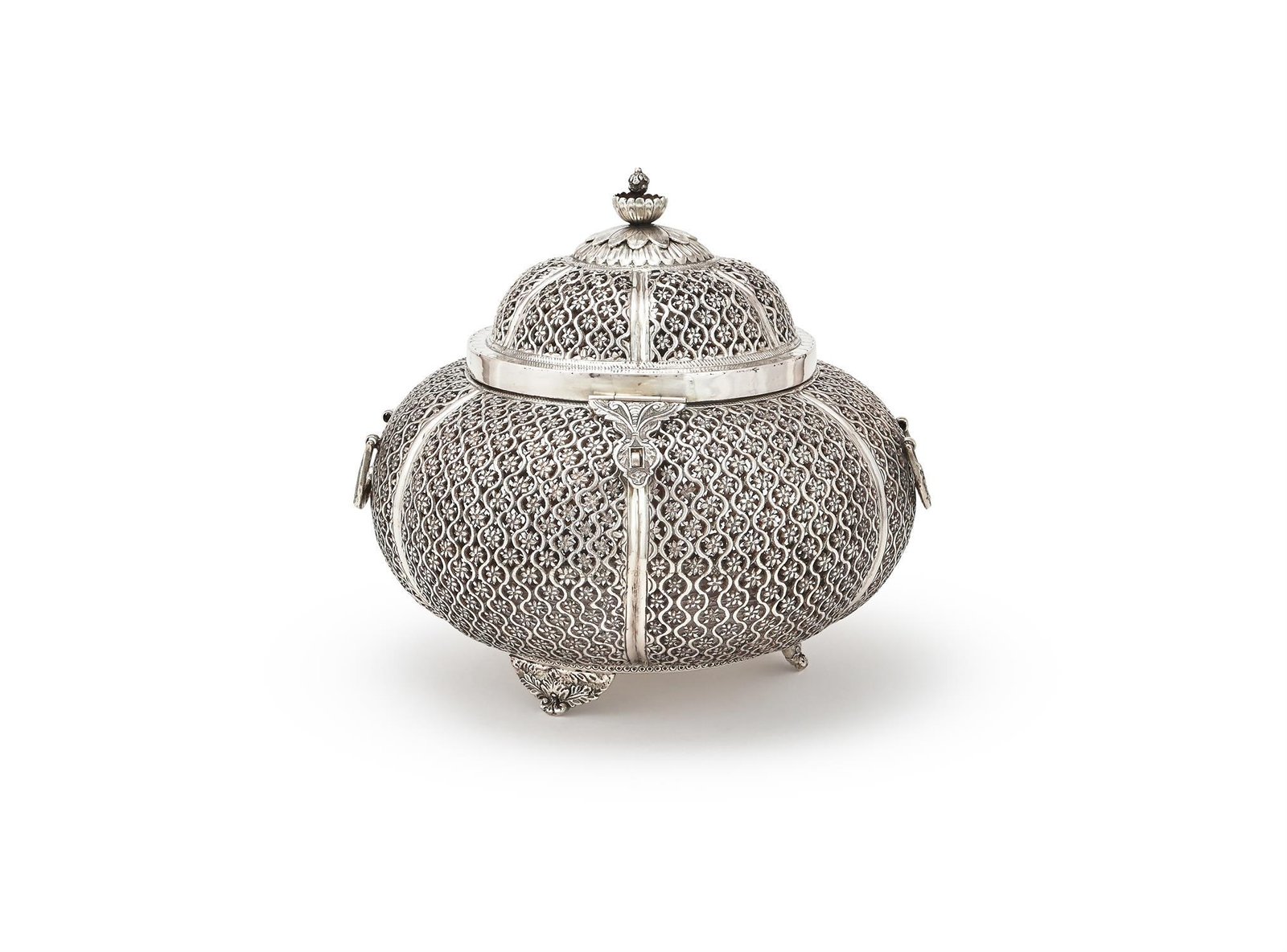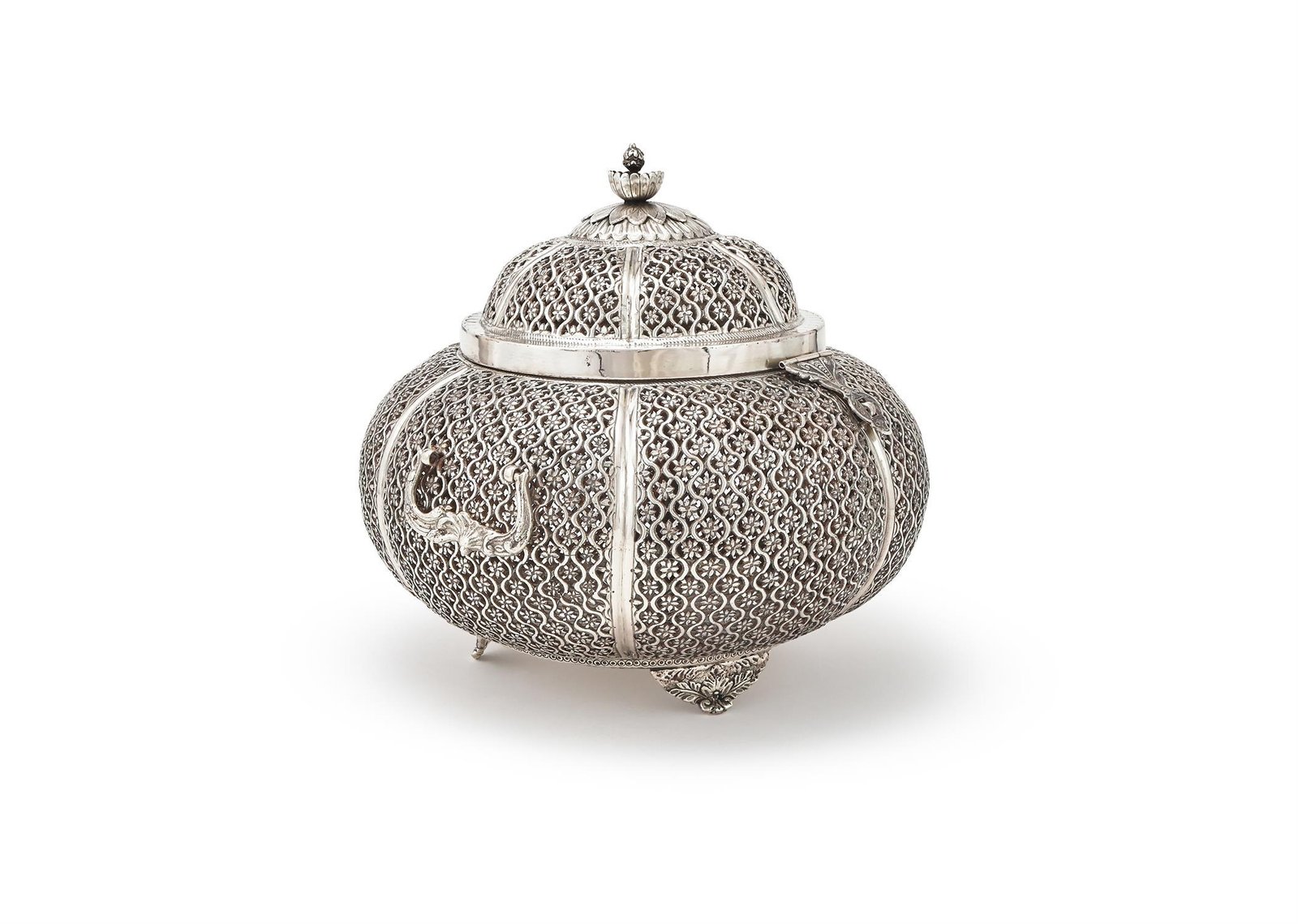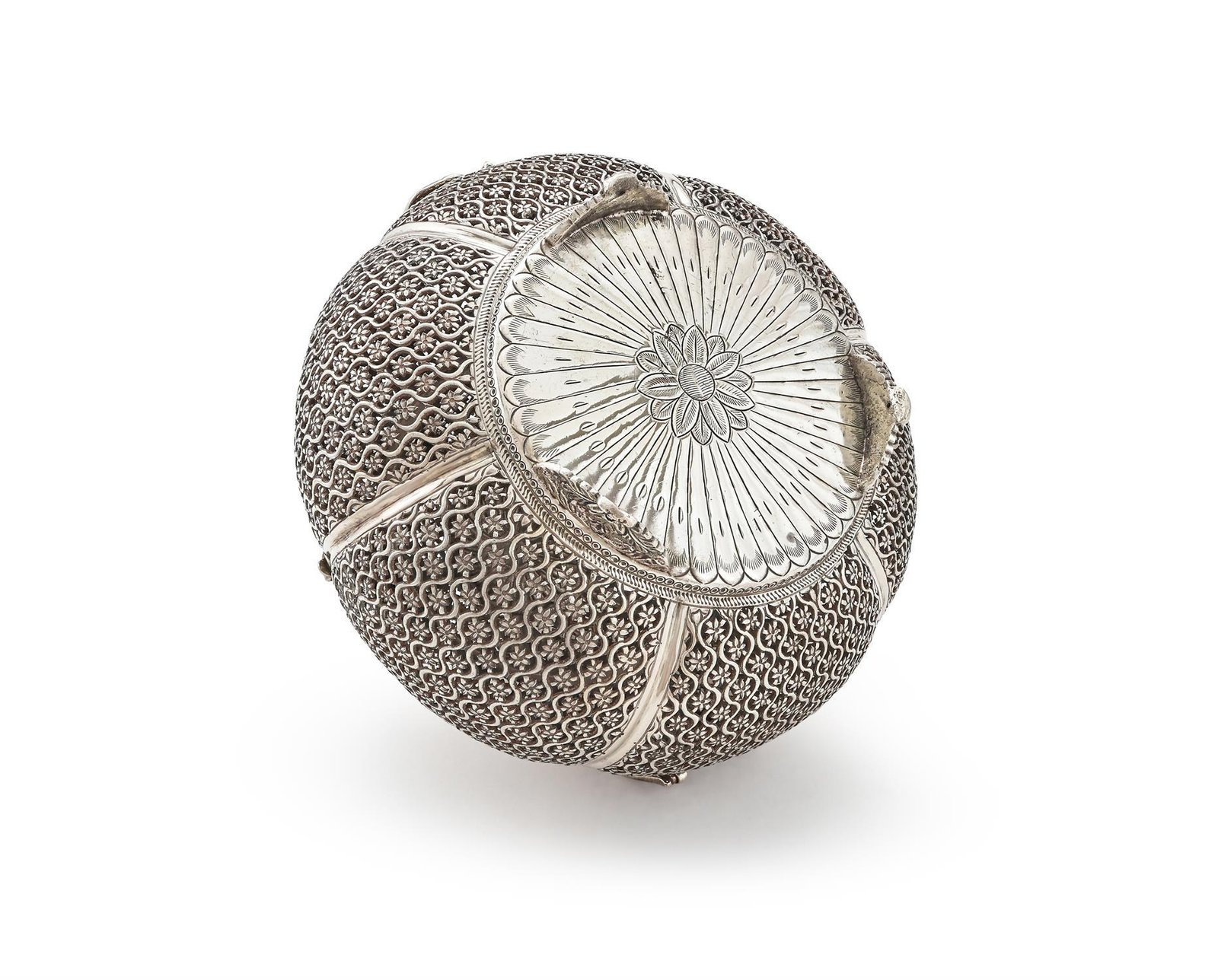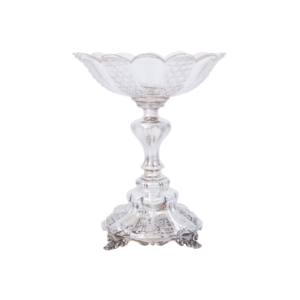Antique 19th Century Lucknow Silver Filigree Dome Box
Antique 19th Century Lucknow Silver Filigree Dome Box
A rare 19th-century Indian silver dome-shaped box from Lucknow, crafted in intricate pierced (jali) filigree technique, with scroll handles and traditional footed base.
Sold Out
This exquisite antique silver box is a prime example of 19th-century craftsmanship from Lucknow, India—a region celebrated for its refined silver filigree work. Crafted in a circular, domed form, the box showcases the jali (pierced) technique, with an openwork lattice of delicate hand-twisted silver wires arranged in an ornate floral and geometric pattern.
The form is both architectural and elegant, resting on three stylized feet, with scroll handles affixed to either side for balance and utility. The removable lid is topped with a fluted knop finial and mirrors the body’s filigree motifs, completing the harmonious design.
Although unmarked, the base bears a typical construction pattern often associated with Lucknow silversmiths from the early to late 19th century. This piece would have originally served as a betel nut or jewelry box and today remains a highly collectible object of heritage and beauty.
Key Features:
Origin: Lucknow, India
Period: Early to late 19th century
Material: Unmarked silver with jali (pierced) filigree work
Dome-shaped with finely crafted lid and knop finial
Scroll handles and traditional trefoil feet
Likely used for betel nut, sweets, or adornments
A rare decorative object representing North Indian silversmithing excellence
Seller Information
This exquisite antique silver box is a prime example of 19th-century craftsmanship from Lucknow, India—a region celebrated for its refined silver filigree work. Crafted in a circular, domed form, the box showcases the jali (pierced) technique, with an openwork lattice of delicate hand-twisted silver wires arranged in an ornate floral and geometric pattern.
The form is both architectural and elegant, resting on three stylized feet, with scroll handles affixed to either side for balance and utility. The removable lid is topped with a fluted knop finial and mirrors the body’s filigree motifs, completing the harmonious design.
Although unmarked, the base bears a typical construction pattern often associated with Lucknow silversmiths from the early to late 19th century. This piece would have originally served as a betel nut or jewelry box and today remains a highly collectible object of heritage and beauty.
Key Features:
Origin: Lucknow, India
Period: Early to late 19th century
Material: Unmarked silver with jali (pierced) filigree work
Dome-shaped with finely crafted lid and knop finial
Scroll handles and traditional trefoil feet
Likely used for betel nut, sweets, or adornments
A rare decorative object representing North Indian silversmithing excellence

















